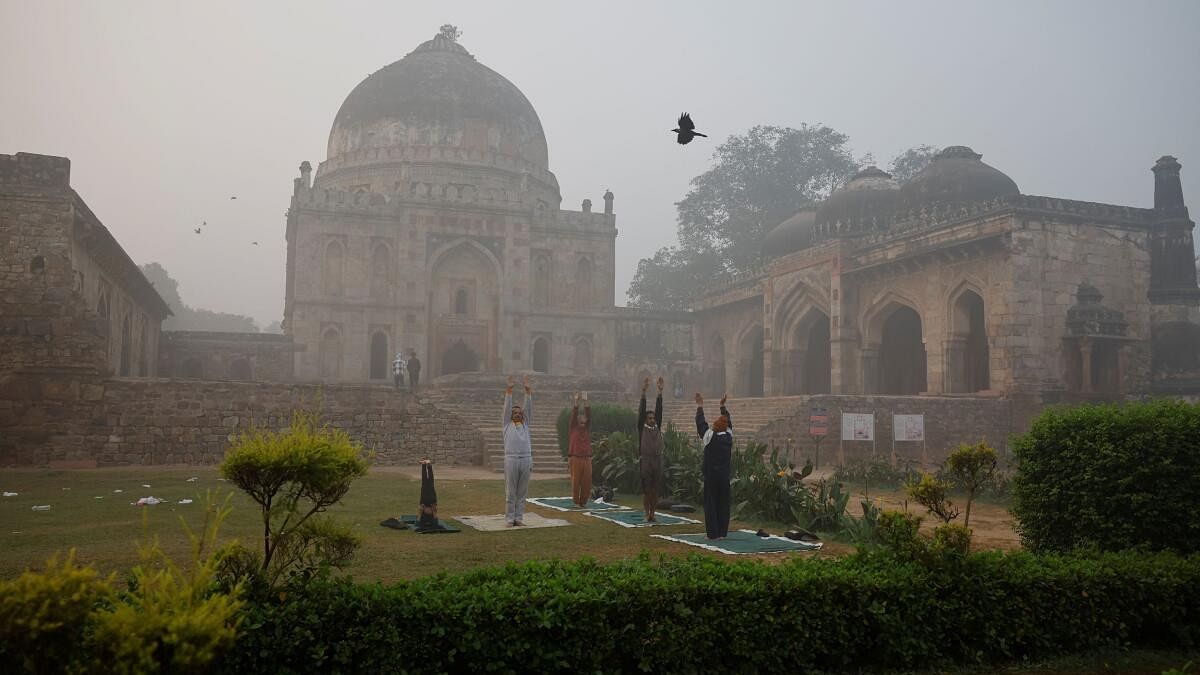
People perform yoga at Delhi's Lodhi Garden as fog envelops the city
Credit: Reuters Photo
Delhi, on Monday, activated Stage IV of the Graded Response Action Plan (GRAP), implementing stringent measures to curb emissions.
Even as the national capital grapples with worsening air quality, and the Supreme Court hears a plea regarding the pollution there, recent satellite imagery has revealed a vast expanse of smog enveloping parts of India and Pakistan, highlighting the severity of the region's air pollution crisis.
Smog seen from space.
Credit: NASA Worldview
The Commission for Air Quality Management (CAQM) enforced GRAP-4 as Delhi's Air Quality Index (AQI) soared to 484, classified as "severe plus", marking the highest level recorded this year.
Under this stage, restrictions include halting construction activities, banning diesel-run medium and heavy goods vehicles, and advising educational institutions to shift to virtual classes.
The smog's visibility from space underscores the transboundary nature of air pollution in South Asia. Factors such as agricultural burning, vehicular emissions, and industrial activities contribute to the deteriorating air quality across the region.
Experts emphasise the need for coordinated regional efforts to effectively address this environmental challenge.
Five flights were diverted at the Delhi airport on Monday morning due to bad weather conditions in the national capital, according to an official.
The official said four flights were diverted to Jaipur and one to Dehradun.
The national capital is grappling with high pollution levels that has also resulted in lower visibility levels in various parts of the city.
The Delhi government asked all schools to discontinue physical classes for all students, except those in classes 10 and 12, from Monday.
An AQI of 400 or higher is deemed 'severe' and it can have an adverse effect on both healthy individuals and people who already have medical conditions.
First implemented in 2017, the GRAP is a set of anti-air pollution measures followed in the capital and its vicinity according to the severity of the situation.
It classifies the air quality in the Delhi-NCR under four different stages: Stage 1 - 'poor' (AQI 201-300), Stage 2 - 'very poor' (AQI 301-400), Stage 3 - 'severe' (AQI 401-450) and Stage 4 - 'severe plus' (AQI above 450).
Delhi recorded a minimum temperature of 16.2 degrees Celsius, 3.9 degrees above normal. The maximum temperature is expected to settle at 27 degrees Celsius, according to the India Meteorological Department (IMD).
The weather department has predicted very dense fog during the day.
(This article has been partially generated by AI, and includes PTI inputs. It has been edited by Web Desk)